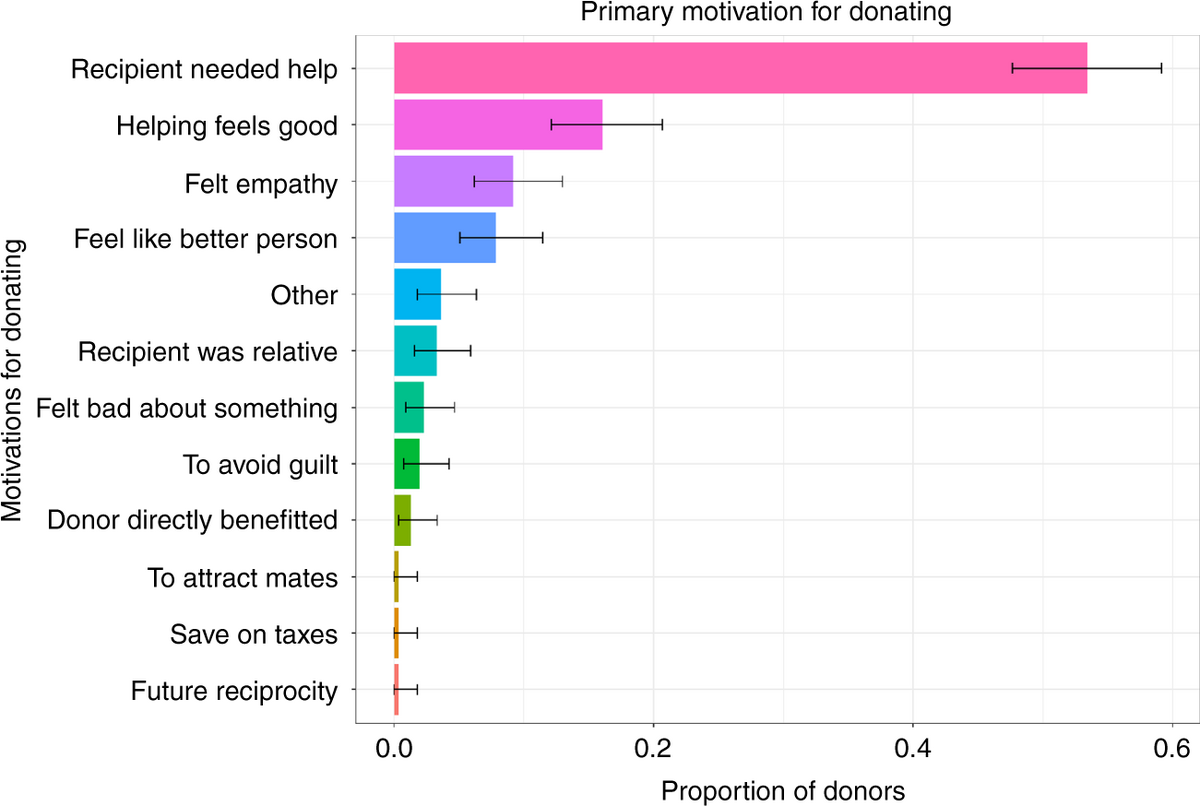Fundraising letters are one of the most powerful tools for inspiring parents to donate money to your school. When well-written, they stir emotions and inspire people to take action.
In this article, we’ll share six best practices, from using the power of story to focusing on their donation’s impact, that will help you craft school fundraising letters that actually work.
- Create a Compelling Subject Line
- Give Each Letter a Personal Touch
- Tell the Parents a Story
- Focus on the Impact of Your Fundraiser
- Keep the Letters Short
- Make Your Call to Action Stand Out
- School Fundraising Letter Templates
- Conclusion
Create a Compelling Subject Line
To get parents to open your fundraising letter, you need to make the subject line compelling and attention-grabbing. Give people a reason to read what you have to say.
A letter with the subject line “Donate now to buy a child breakfast!” is going to have a much higher open rate than one that simply says, “Please make a contribution.”
The former evokes feelings of intrigue and empathy, while the other moves the reader to do nothing but toss it in the trash.
Here are some best practices and tactics to consider when creating your subject lines:
| Keep it concise. | Mailchimp recommends keeping your subject lines under 60 characters. That way, all recipients, regardless of device, will be able to see the entire subject line. |
| Share the result of donating. | For example, “Donate now to help a child read!” tells the recipient what positive end their donation will achieve. |
| Create a sense of urgency. | Consider including words like “now” or “soon” to hint to the recipient that help is needed quickly. |
| Preview the content. | Signal to the recipient the content inside the email so that they know what they’ll read if they open it. |
| Personalize it. | Put the parent’s first name in the subject line to make it feel as if it were written for their eyes only. |
After creating a subject line, put yourself in the potential donor’s shoes and think about whether or not you’d feel inspired to read the letter.
Share it with peers and ask them to do the same.
Also, be sure to track response rates and donation numbers so that you can use this feedback to assess the effectiveness of your subject lines.
You can then alter it next time and compare the success metrics to find a winner or uncover principles of subject lines that work well in your particular area.
Give Each Letter a Personal Touch
There’s a reason that most birthday cards leave space for the sender to write a personalized message to the recipient.
A handwritten message from their friend is much more powerful than the cheesy cliche from the underpaid Hallmark writer who’s struggling to reason out how their writing career came to this.
That same desire to feel special is present amongst your potential donors. They don’t want a letter written by the school to a mass of parents.
They want a letter written by one single individual and written for them specifically.
Giving each school fundraising letter a personal touch thus increases the chances that these parents will open and read your letter.
There are a couple of techniques that allow you to make the letter feel more personal than it really is:
| Use “you” throughout the letter. | This creates the pleasing sensation that you’re speaking directly to them. |
| Bring up their past donations. | If they donated in the past, include that somewhere—e.g., “You were kind enough last year to donate $450…” |
| Use their name throughout the letter. | Put their first name in the subject line, the greeting, and throughout the body of the letter. |
| Weave in information you have about them. | If you track data in your donor management system, use what details you can (recent birthdays, promotions, interests) to signal to them that this is not a mass-mailed letter. |
For example, you could say in the opening line of your letter, “I see that you had a birthday recently. I hope it was a fun one!”
Often, something like that is enough to convince the reader that you care about them and consider them part of your valued community.
When you personalize your letters, even in small ways, you’re going to evoke positive feelings toward your school that inspire parents to donate.
Tell the Parents a Story
If a famous history book like Barbara Tuchman’s A Distant Mirror was written as an argument instead of a narrative, it would’ve sold one-tenth of the copies and never won the Pulitzer prize.
Stories hold a reader’s attention, move their emotions, inspire action, and make people more open to whatever arguments or requests are within them.
This effect on human psychology makes them a powerful marketing tool.

Source: Dr. Pam
If you wish to motivate a large number of donations, it’s best to begin your letter by telling parents an inspiring and emotional story that makes them want to help your cause.
Keep the story short, about 2-3 sentences. Start it by introducing the main character(s), either one specific student or a group of students.
Making the protagonist a single student is often more effective, though.
According to research, we tend to empathize more with one identifiable victim of an unfavorable event than a group of them.
Next, name the problem they faced, how they overcame it with your school’s support, and the amazing results they achieved.
Also, make sure the story relates to your current fundraising project.
For example, if you were trying to raise money for new books, you could tell a story about a child who was struggling in school until their intellectual curiosity was awakened by a series of outdoor adventure novels.
As for style, write the story as if you were telling it to someone in-person. Often, less is more. Before sending it off, read it to people and see if you strike an emotional chord with them.
Focus on the Impact of Your Fundraiser
Give your parents a strong “why” for donating to your school’s fundraising project.
If they feel convinced that their money will make a strong and positive impact on the lives of your students, they’ll be more excited to donate.
Therefore, it’s important to explain the impact of the fundraiser in your letter.
Explain in a few sentences the outcome you hope to achieve, whether that’s healthier food options for students, a more diverse library, or a language lab, and why it’s important.
You should also tell the parents how you plan to spend the money you raise.
According to a survey, knowing how the money will be spent is the top factor that encourages people to donate.
If it makes sense, consider also tying common donation amounts to specific outcomes, like this example library upgrade fundraiser does:
| $20 | 100 new bookmarks |
| $100 | 5 new books |
| $500 | 30 new books |
| $2000 | 130 new books |
| $5000 | 5 new computers |
To put the impact in perspective, you should also explain to the parents the situation the children are facing now, and why they need help so badly.

Source: Nature
When you juxtapose the current negative situation with the post-fundraiser improved situation, the perceived impact is magnified, and parents will be more willing to give.
Keep the Letters Short
Attention spans are either on the decline, or people are becoming more selective about where they spend that valuable resource.
Either way, your letters have to be succinct if you want to hold people’s attention and get them to read the entire thing.
Around 2 pages for a written letter should suffice, and emails should be even shorter.
A rule of thumb is to use a length that allows you to cover all the essential components of a successful fundraiser letter:
| Greetings | Say hello to your recipient and use their name. |
| Inspiring Story | Tell a short story that makes the reader care about your cause. |
| Current Problem | Explain the issue you’re trying to solve with the money you raise. |
| Your Project | Share your plan and the goal you hope to achieve for students. |
| Donor’s Impact | Tell the donor what their donation will help you achieve. |
| Call to Action | Ask the parent to donate now and tell them how to do so. |
The reason why you don’t want to go too short is that you might fail to communicate all that you need to in order to create an emotional reaction in your potential donors.
That said, if you can do all the above in one page, even better.
Regardless of its length, you can always make your letter quick and easy to read. Aim to write a scannable letter that appeals to the readers who just want the most important details.
Do this by bolding key information like the call to action, including images that speak a thousand words, and using headings, bulleted lists, and tables.
That way, the people who are busy or intimidated by large paragraphs of text will, upon seeing that it’s scannable, still read the letter.
If the writing is good enough, they may even find themselves reading every single word.
In sum, structure is more important than word count or page length, but that doesn’t mean you should use more words than necessary. Aim for word economy.
Make Your Call to Action Stand Out
The call to action (CTA) in a school fundraising letter is the short request at the end of the letter that urges parents to donate to your school.
In your letter, you should make a specific ask and express the urgency of the compliance—e.g., “Please donate by December 2nd to help us build a better playground for the children.”
Then, it’s important to explain how parents can donate. For example, you could write, “Please visit {Website URL} to make a donation in just a few clicks.”
By adding the phrase “just a few clicks”, you make the act seem painless, and this could encourage parents to donate.
Your letter’s CTA should also stand out from the rest of the writing so that parents don’t miss it.
To make it easy to find, consider bolding the sentences, or placing the CTA next to or underneath a capitalized heading like “Donate Now: {insert CTA}.”
Another best practice is to mention the progress you’ve made so far on your project and explain that other parents have already donated.
This convinces the parent that their money is going to be put to good use and plays a bit on their desire to be as charitable as the other parents in the community.
School Fundraising Letter Templates
Below are two fundraising letter templates, one for a longer, more information-packed letter, and one for a shorter email that you can use in a fundraising email campaign.
They’re designed to be tailored to fit your specific needs.
Informational School Fundraising Letter Template
Here’s a template for a school fundraising letter. A physical letter allows for a bit more in-depth approach than an email, so it can be more informative.
[Name of school]
[Street address]
[City, State Zip]
[Date]
Dear {Parent name},
Thank you for taking the time to read this letter. We rely on the kindness of parents like you to improve our school’s educational capacity as well as the lives of our students.
Just recently, {here, briefly tell an inspiring story about how a past project helped a student} We hope that this year many students achieve the same.
Our current project is {description of your project and its desired outcome (e.g., fund 5 college scholarships)}. In order to achieve this amazing outcome, we need to raise {Dollar amount}.
That’s where you come in. We’ve already received a fair amount of donations, but we still have a long way to go, and we’d greatly appreciate your support.
Here are some common donation amounts and what they can help us achieve:
| {Dollar Amount—e.g., $500} | {Impact/Quantity—e.g., 1/8 of a scholarship} |
| {Dollar Amount} | {Impact/Quantity} |
| {Dollar Amount} | {Impact/Quantity} |
| {Dollar Amount} | {Impact/Quantity} |
Please donate by {Date}: To make a donation, go to {Website URL} and select the amount you want to give. It should take no more than two minutes to place your donation. Regardless of how much you can give, you’ll be helping students {recap the desired outcome}.
If you want to learn more about the fundraiser project, please don’t hesitate to reach out to us at {Phone number}. We’d love to tell you all about it.
Thank you again for taking the time to read this letter. I look forward to working with you to achieve our school’s goals and bettering the lives of our students.
Warm regards,
{Your name}
{Your title}
{Your contact info}
Next, we’ll take a look at the fundraising email, which is briefer, and therefore more immediately action-oriented.
Short and Engaging School Fundraising Email Template
Emails are conventionally shorter than physical letters.
Therefore, the purpose of the email is not to provide in-depth information, but to get the point across as succinctly as possible, in order to spur the potential donor into action.
Here’s an example of how to do it.
Hi {Parent name},
Fundraisers have tremendous power to change a child’s life. {3-4 sentence success story about a child your school has helped}.
This year, we’re trying to make that future accessible to even more of our students by {1-2 sentences describing the project}.
We’ve raised {Dollar amount} so far, but still need {Dollar amount} to reach our ambitious goal of {Total funds raised goal}.
A donation from you can help {2-3 project benefits—e.g., provide breakfast for food insecure children, stop children from learning on an empty stomach, and support families in need}.
{Insert CTA button with the phrasing “Please Donate Today”}
Hopefully, the two templates we’ve provided above will serve as a useful starting point for your fundraising efforts.
Conclusion
Writing effective fundraising emails is about appealing to the desires of your readers.
They want to help the children of the community, so you must use the letter to convince them that your project and their donation will do exactly that.
While fundraising letters are an important aspect of attracting donations for your school, they’re still just one part of an entire process.
Check out our article on how to run a successful school fundraiser to see what else you should be doing to maximize donations.


















